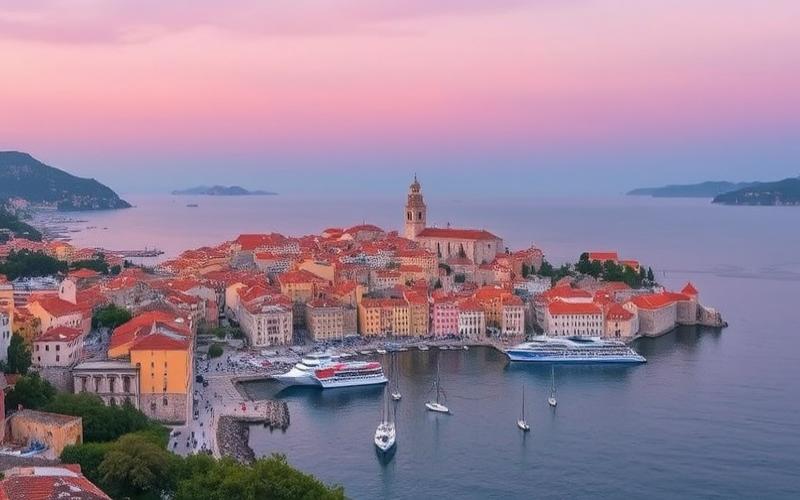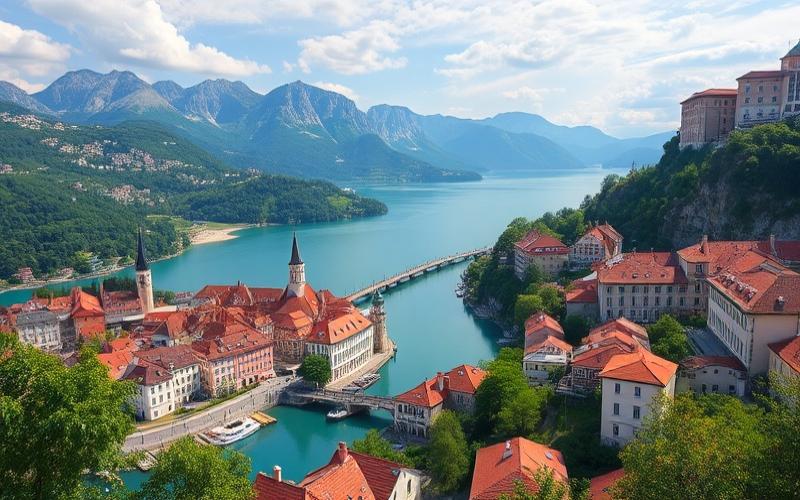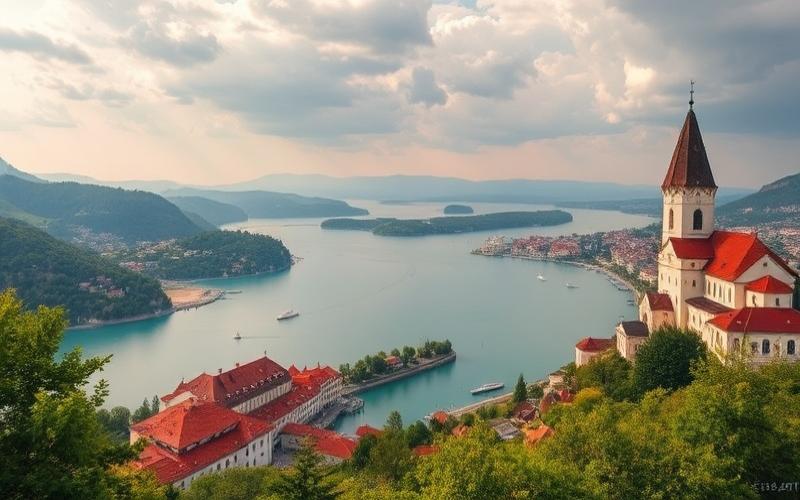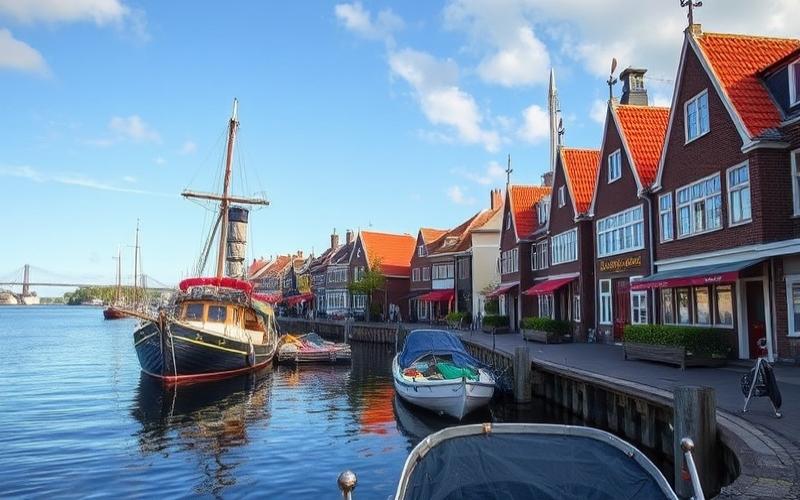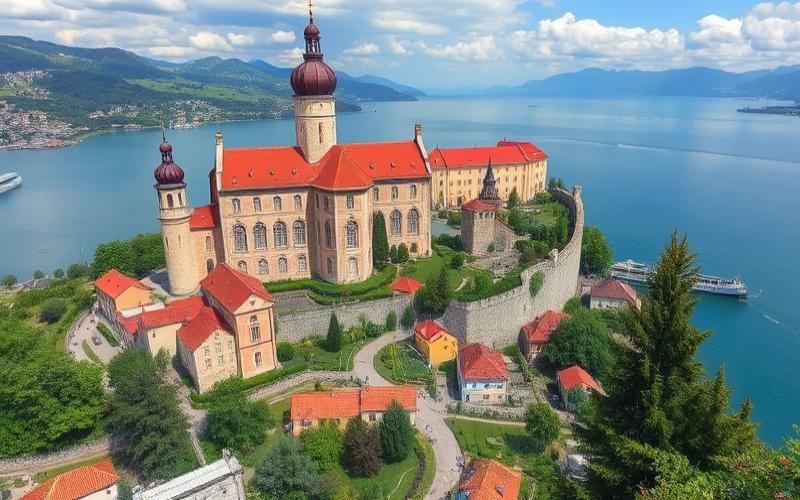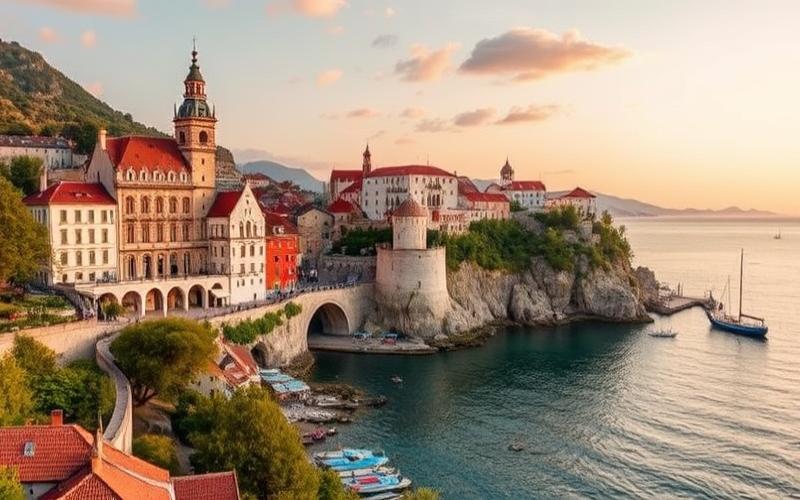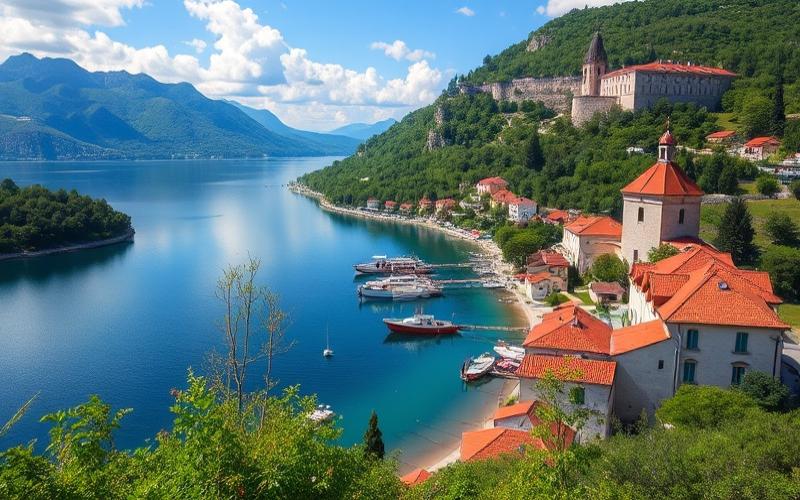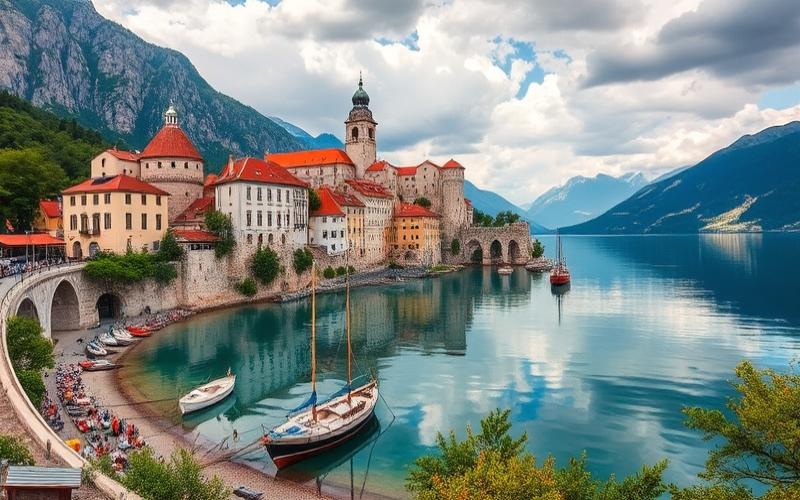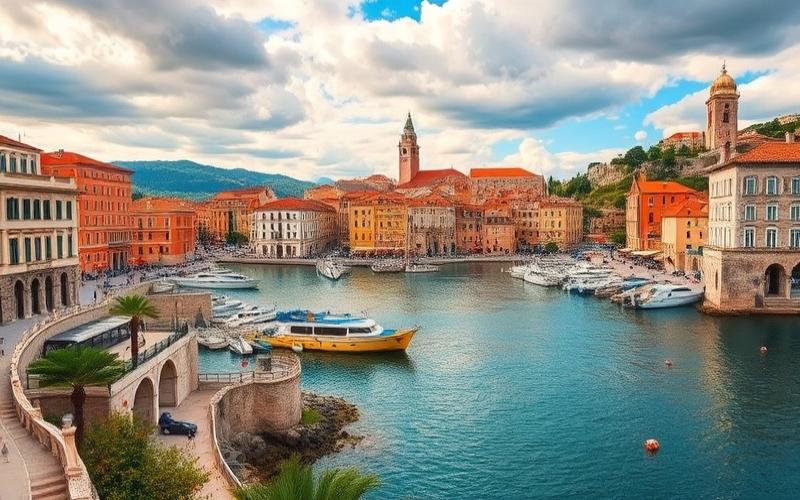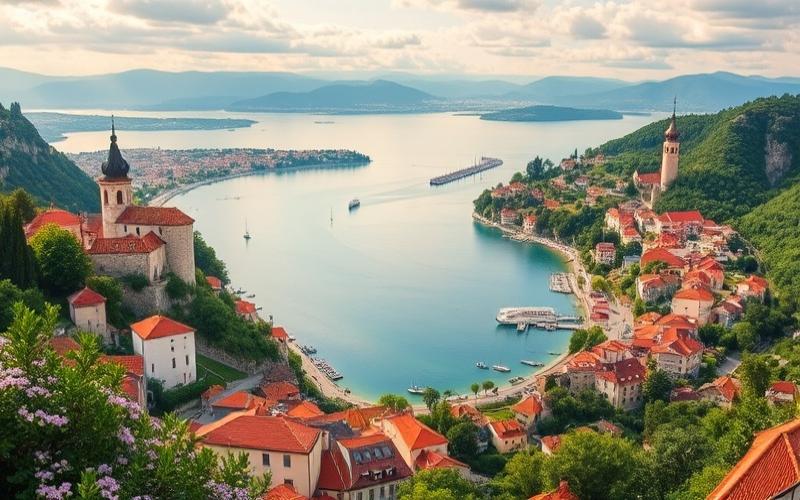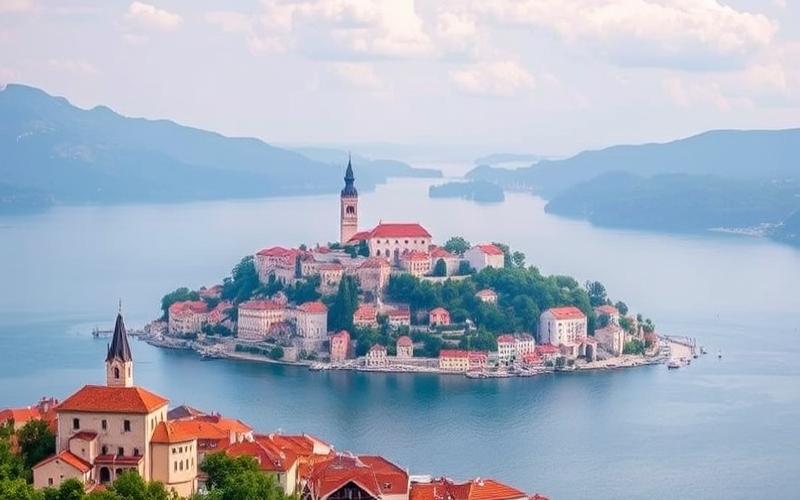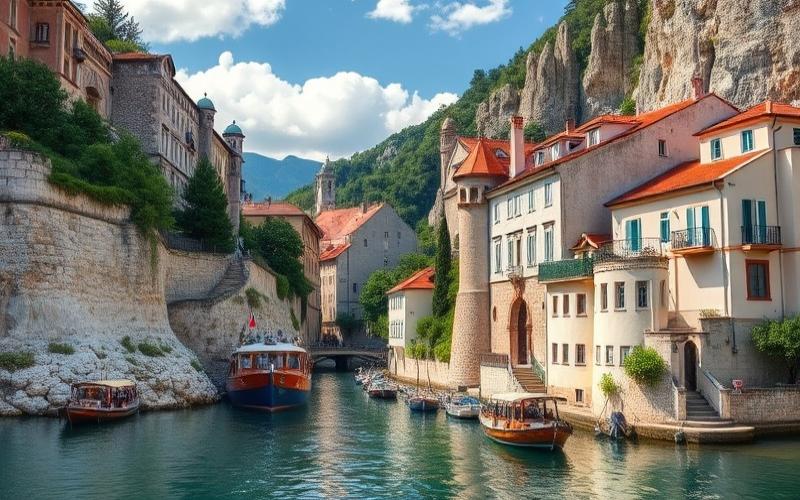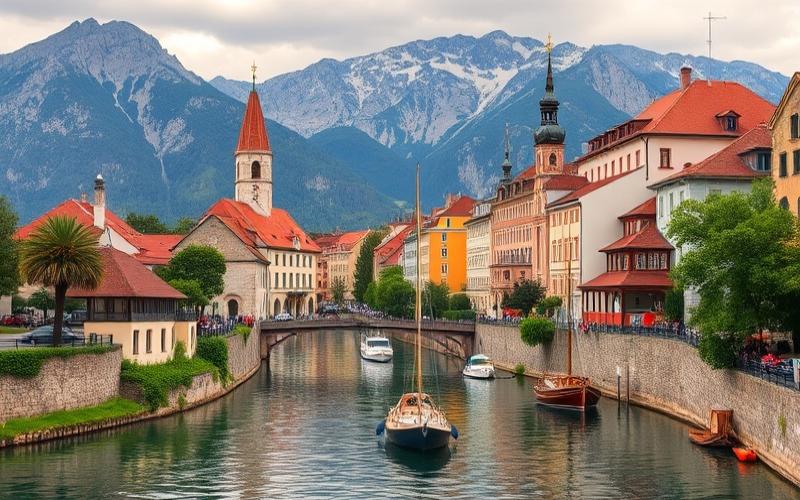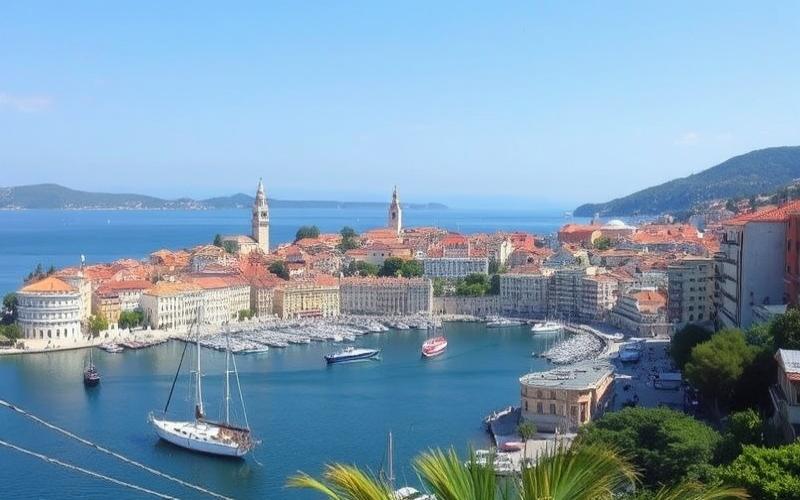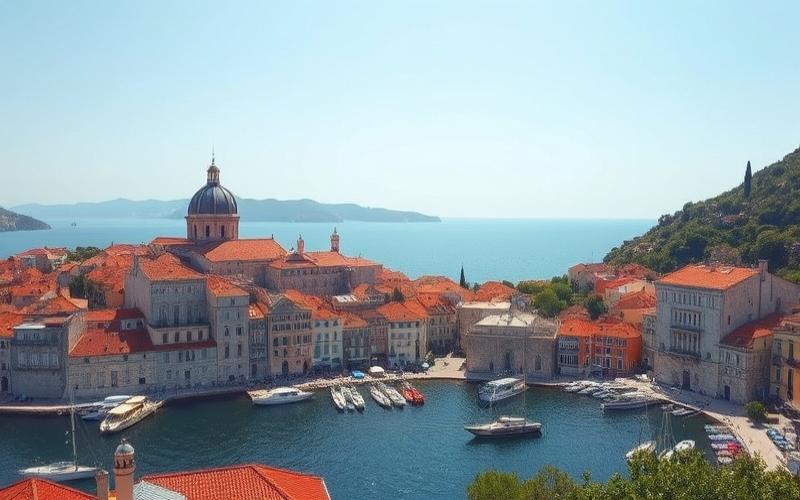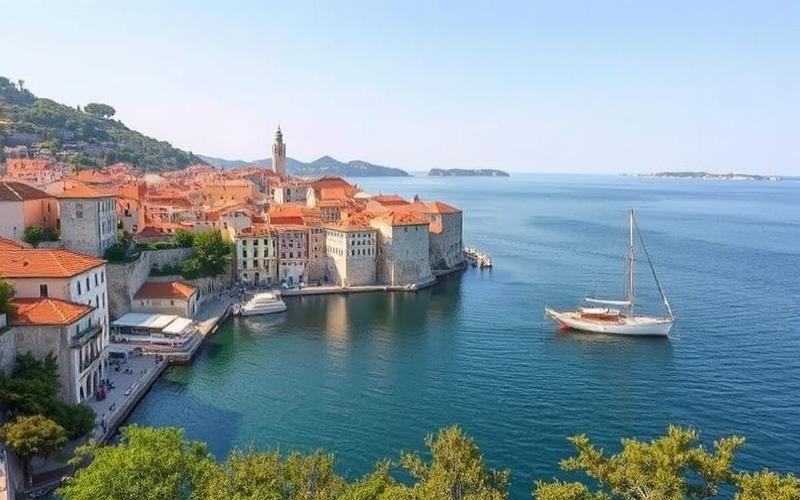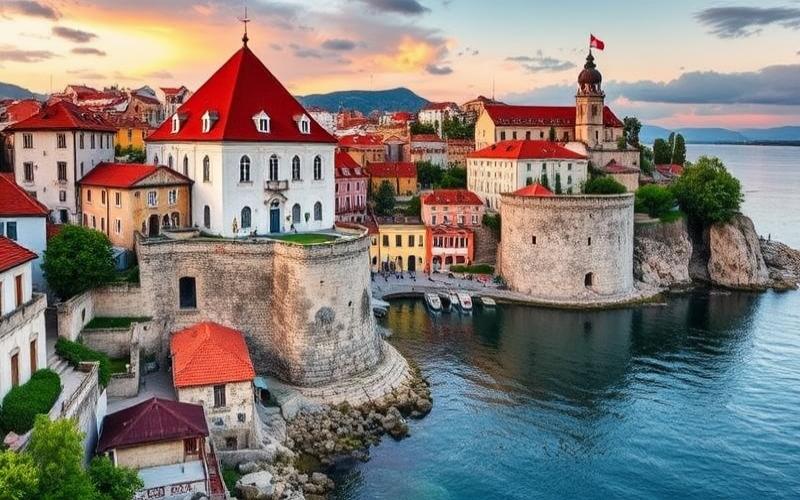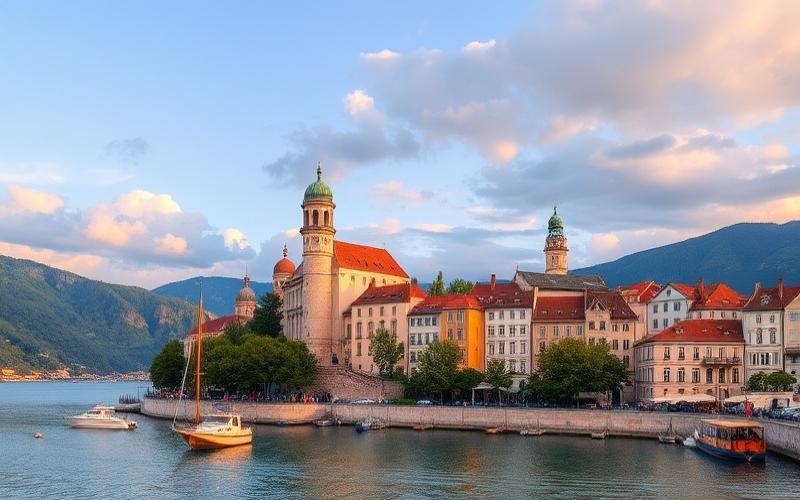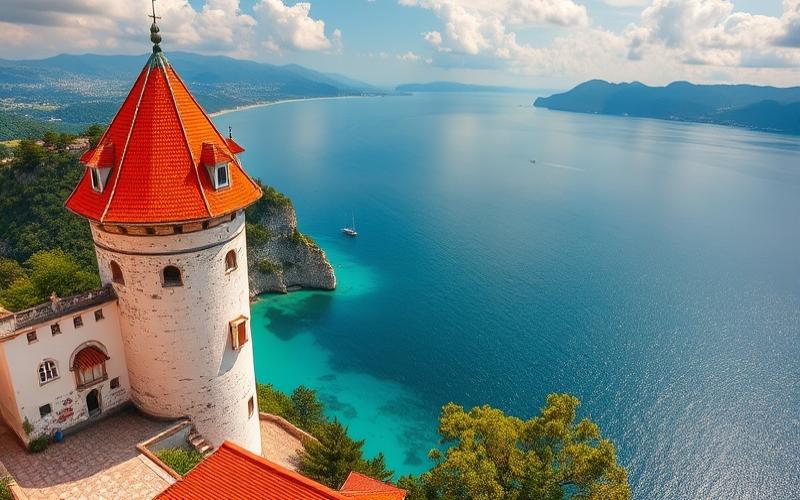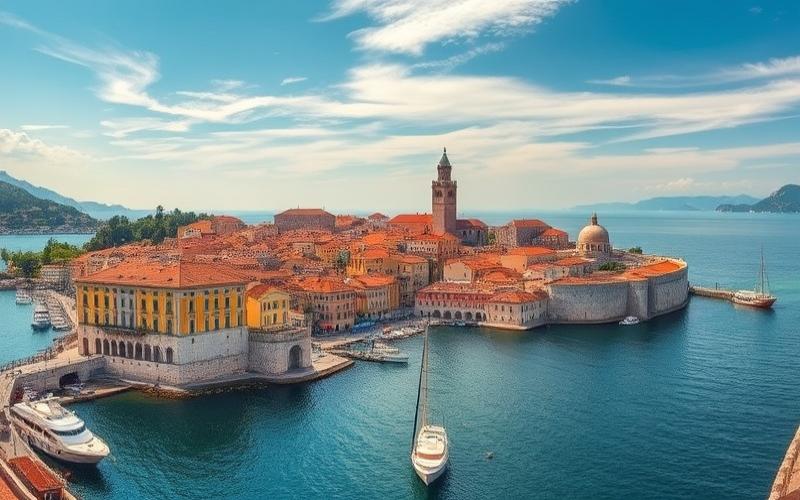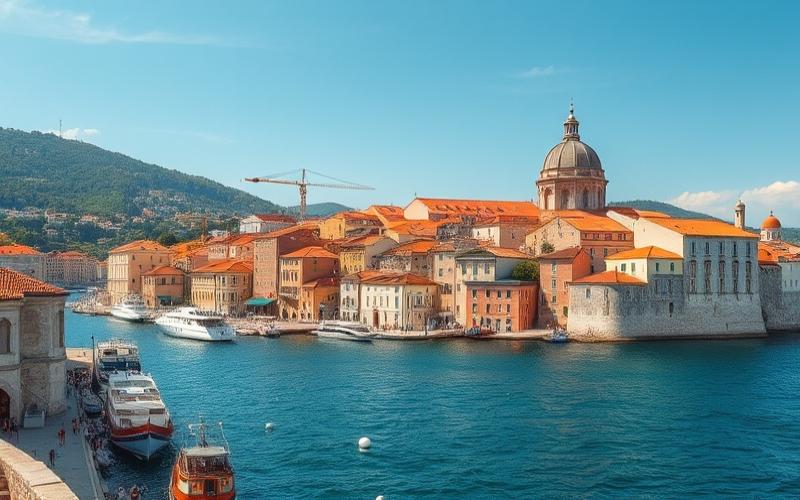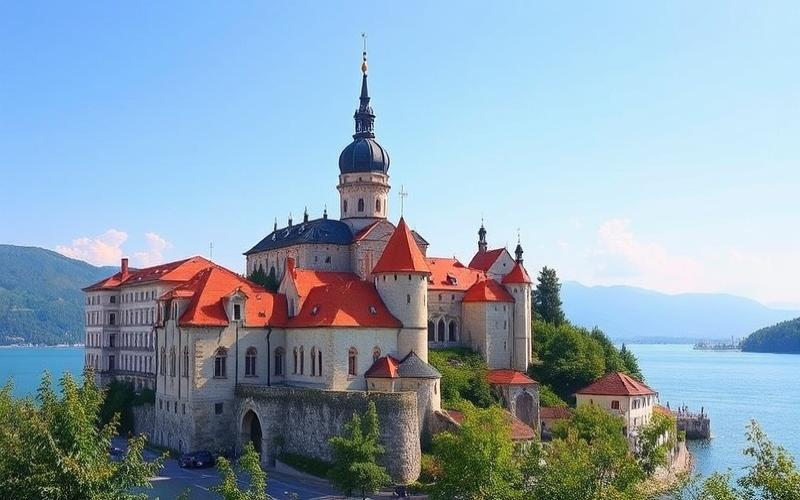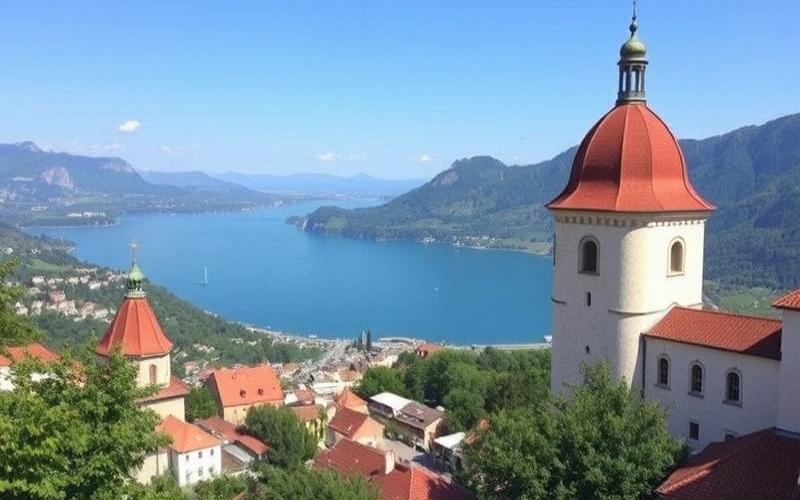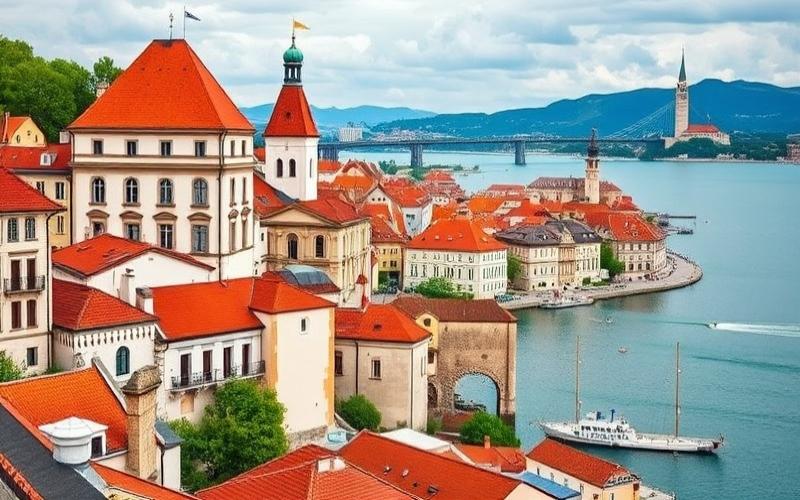
 Published on and written by Cyril Jarnias
Published on and written by Cyril Jarnias
Croatian real estate is generating growing interest, particularly for those looking to leverage leverage to maximize their investments. This mechanism, which involves using borrowing to increase investment capacity, can offer promising opportunities in a flourishing market marked by enchanting coastal landscapes and expanding tourism potential.
However, to succeed, it’s essential to understand the nuances of real estate financing in this country, particularly regarding local regulations and market fluctuations. This article explores how to leverage leverage to turn a potential investment into tangible success in this dynamic sector.
The Basics of Leverage in Croatian Real Estate
Leverage in real estate refers to using borrowing to increase investment capacity and maximize rental returns. Instead of investing only personal savings, an investor takes out a loan, allowing them to acquire more expensive and potentially more profitable properties.
Application in the Croatian Real Estate Sector
In Croatia, leverage is primarily used for:
- Purchasing apartments or houses intended for tourist rental (very popular on the Adriatic coast).
- Investing in residential or commercial buildings with limited personal contribution.
Concrete example:
| Personal Contribution | Bank Loan | Property Value Acquired | Estimated Annual Rent |
|---|---|---|---|
| €50,000 | €100,000 | €150,000 | €12,000 |
In this hypothetical scenario, without leverage, one could have purchased only for €50,000. With the loan, the acquired property is three times greater and generates more rental income.
Main Advantages
- Increased invested capital: Allows access to more expensive properties.
- Amplified returns: If the rental yield rate is higher than the cost of credit.
- Rapid building of a real estate portfolio.
- Possible tax optimization: Interest paid can sometimes be tax-deductible under local schemes.
Associated Risks
- High debt: In case of market downturn or prolonged vacancy.
- Bank rate variations: Possible increase in case of financial instability.
- Local real estate devaluation.
Summary list:
- Advantages
- Access to superior properties
- Accelerated portfolio building
- Increased income
- Risks
- Over-indebtedness
- Negative returns if insufficient rents
- Sensitivity to local economic conditions
Current Croatian Market Conditions
The Croatian real estate market remains dynamic, especially on the coasts and in major cities (Zagreb, Split). Prices have seen steady growth in recent years due to international tourism and foreign investment. However:
- Factors influencing decision-making
- Currently moderate but potentially rising bank interest rates
- Strong seasonal rental demand (summer), but increased risk off-season
- Tightened regulations on tourist rentals (permits required)
Examples Illustrating Potential Maximization via Leverage
Suppose an investor purchases two apartments through bank financing covering up to 80% of the total price:
If they manage to rent these properties year-round thanks to growing tourism, they can repay their loan with the rents received while maintaining a significant profit margin. Ultimately, they not only have the generated income but also increased portfolio value if prices continue to rise.
Local Regulations & Tax Considerations in Croatia
Investors must consider:
- Rules regarding real estate loans for foreigners (sometimes requiring residency or creating a local company)
- Taxation applicable to rental income (income tax on rental earnings)
- Specific taxes related to real estate acquisitions (annual property tax)
| Regulatory Elements | Potential Impact |
|---|---|
| Foreign bank loan | Strict conditions based on residence/status |
| Rental income taxation | Progressive taxation; mandatory declaration |
| Property tax | Mandatory annual payment |
| Tourist rental permit | Prior application to local authorities |
Key takeaway: Judicious use of leverage allows real estate investors in Croatia—subject to strict compliance with local regulations—to amplify their capital while diversifying potential income sources; however, each operation must be carefully evaluated so that the expected gain fully compensates for the risks incurred.
Good to know:
Leverage in real estate involves using loans to increase investment capacity, thereby allowing access to larger properties with limited initial capital. In Croatia, this financial tool is particularly attractive due to historically low interest rates and a continuously growing real estate market, especially in coastal regions highly sought after by foreign investors. However, it presents risks, such as potential rate fluctuations or a market downturn that could lead to repayment challenges. For example, with an initial 20% down payment, an investor can obtain a loan covering 80% of the property’s value, increasing the potential return on equity in case of price appreciation. It’s crucial to consider local regulations, which often require substantial guarantees and rigorous documentation. Additionally, tax differences for residents and non-residents can influence investment profitability. Therefore, before employing leverage, a thorough analysis of the current Croatian market and future projections, as well as careful examination of tax implications, are essential to optimize investments and minimize risks.
Understanding Smart Debt Strategies
Concept of Smart Debt in Real Estate
Smart debt involves using credit strategically to finance real estate investments, while controlling risks and optimizing profitability. This approach allows investors to leverage financial leverage, i.e., increase their investment capacity through borrowing, to maximize returns on equity.
Advantages for Real Estate Investors in Croatia
- Access to higher-value or better-located properties.
- Optimization of rental yield through leverage (ratio between generated income and actual invested capital).
- Possibility to benefit from potential real estate price increases without mobilizing all capital.
Analysis of Financial Leverage
| Strategy | Effect on Return | Associated Risks |
|---|---|---|
| Moderate use of credit | Increased return compared to cash investment | Limited risk with fixed rates and stable rental flows |
| High debt | Potentially much higher return, but increased volatility | Exposure to market risk and rate variations |
Leverage works particularly well when the cost of credit is lower than the expected return rate on the investment. In Croatia, mortgage rates are around 3–4%, requiring rigorous property selection to ensure profitability exceeds borrowing costs.
Risks of High Debt and Mitigation Methods
List of main risks:
- Unexpected increase in variable rates
- Vacancy or decrease in rents
- Property depreciation
- Over-indebtedness
Strategies to limit these risks:
- Prefer fixed-rate financing when possible.
- Build a financial reserve to cover periods without rental income.
- Diversify real estate investments (property types, locations).
- Conduct accurate simulation before any acquisition (calculations for different scenarios).
Available Financing Options in Croatia
Comparative list:
- Mortgage loan from a Croatian bank:
– Rates around 3–4%
– Often reserved for Croatian tax residents
– Mortgage generally required - Loan from a French bank:
– Possible under conditions (mortgage on French property)
– Simplified process for non-residents
Comparison with other European countries:
| Country | Foreign Access to Credit | Average Rate | Specificities |
|---|---|---|---|
| France | Open | ~2% | Long duration possible |
| Spain | Open but selective | 2–3% | Local mortgage required |
| Croatia | Restrictive | 3–4% | Often reserved for nationals |
In Croatia, access to credit remains more difficult than in some neighboring countries; often requiring justification of local tax status or offering solid guarantees.
Practical Tips: Evaluation and Optimal Timing
- Calculate maximum debt capacity precisely (include all income/financial stability).
- Simulate multiple scenarios: rental/return/rate evolution.
- Plan for significant personal contribution (>20%) to reduce monthly financial pressure.
- Monitor local economic conditions before any acquisition: potential tourism increase or major urban projects can influence the market.
- Ensure chosen timing corresponds to optimal professional/personal stability.
Concrete Examples and Successful Case Studies in Croatia
Case #1: Foreign investor who obtained a French loan with mortgage on primary residence
Acquisition in coastal region near Split; seasonal rental with gross yield >6%. Controlled debt thanks to regular flows from beach tourism.
Case #2: Croatian resident benefiting from tourism boom
Purchase financed by local loan after tough negotiation; quick conversion to medium-term rental for digital nomads—dynamic adaptation ensuring financial stability against fluctuating tourist seasonality.
Managing debt through rigorous financial planning, wisely choosing banking partners according to personal/fiscal situation, staying attentive to local regulatory developments are all essential assets for successful real estate investment via smart debt in Croatia.
Good to know:
Smart debt in Croatian real estate relies on strategic use of financial leverage to optimize investment returns. By taking advantage of generally competitive mortgage interest rates in Croatia compared to other European markets, investors can increase their real estate purchasing power. However, it’s crucial to manage the risk associated with high debt, particularly through rigorous financial planning and realistic assessment of debt capacity. Options such as variable-rate mortgages offer opportunities suited to various investor profiles. An interesting case study reveals that an investor who purchased an apartment in Split with 70% financing managed to double their rental yield in four years through effective rental planning and favorable market revaluation. To succeed, it’s advisable to choose the right timing for debt, considering economic conditions and local real estate market trends.
Optimizing Return on Investment Through Credit
Real estate credit constitutes a powerful financial lever allowing investors to increase their investment capacity and maximize return on investment (ROI) in the Croatian real estate sector. Using leverage makes it possible to acquire higher-value properties or multiply their number, while preserving liquidity.
Types of Credit Available for Real Estate Investors in Croatia:
- Mortgage loan from a Croatian bank: generally accessible to Croatian tax residents; financed amount varies from 60 to 70% of purchase price, with interest rates around 3 to 4%. Approval criteria are strict and require proof of stable income and good credit rating.
- Real estate credit contracted in country of origin (e.g., France): some foreign investors finance their Croatian purchase via a mortgage secured by property in their country of residence. This solution bypasses local credit access restrictions.
- Debt consolidation: allows restructuring existing debts to reduce debt ratio and increase borrowing capacity before new investment.
Long-term Advantages of Credit Use:
- Leverage effect: allows investing in larger or more numerous properties, amplifying potential gains on equity.
- Tax optimization: loan interest can sometimes be deducted from rental income, reducing taxation on profits (verify local and international taxation according to structure).
- Portfolio diversification: using credit frees up liquidity for other investments, reducing concentration risks.
Potential Associated Risks:
- Exchange rate risk: for investors borrowing in currency different from euro (or Croatian kuna, depending on period).
- Interest rate risk: rate increases can burden debt load and reduce profitability.
- Vacancy risk: in case of no tenants, investor must bear loan repayment alone.
- Over-indebtedness risk: poor debt management can lead to financial difficulties, even forced property sale.
Best Practices for Choosing Right Credit Type:
- Compare credit offers (rates, duration, additional fees) between local banks and banks from country of origin.
- Prefer fixed-rate loans to secure credit cost over duration.
- Ensure repayment capacity considering unfavorable scenarios (rate increases, vacancy).
- Use specialized lawyer and interpreter to secure procedures and understand all contractual implications.
Tips for Effective Debt Management:
- Maintain reasonable debt ratio (< 35% of income ideally).
- Regularly monitor financial health indicators (debt service coverage ratio).
- Anticipate early repayment possibilities if cash flow allows.
- Consider refinancing options if more favorable market conditions arise.
Examples of Successful Leverage Use in Croatian Real Estate:
| Investment | Property Value | Financing Method | Results |
|---|---|---|---|
| Apartment purchase in Zagreb | €200,000 | 70% bank loan, 30% personal contribution | Net rental yield > 6% after credit repayment, with strong property appreciation |
| Villa purchase in Dubrovnik by European resident | €300,000 | Local loan at 65% of price, 35% personal contribution | Rental income covering 120% of monthly payments, latent capital gain in 5 years |
Key takeaway: Using credit, when controlled, allows multiplying the impact of real estate investments in Croatia. The key lies in rigorous financing selection, prudent debt management, and thorough knowledge of the local market.
Good to know:
Using credit as financial leverage in Croatia allows maximizing real estate investment return through access to various loan types, such as local mortgages and bridge loans. The interest of credit lies in the ability to invest without fully mobilizing capital, which can increase long-term profitability. However, investors must assess risks, including interest rate fluctuations and potential real estate price variations. To optimize these investments, it’s essential to choose the credit type suited to one’s profile and project, such as opting for fixed rates to protect against rate increases. Prudent debt management and maintaining a good interest coverage ratio are also recommended practices. Concrete examples include investors who acquired properties in Croatian tourist areas through targeted credits, thus generating substantial profits via seasonal rental.
Case Studies: Successful Real Estate Investments in Croatia
Case Study 1: Seasonal Rental Investment in Split
A French investor couple acquired a 70 m² apartment in Split in 2019, in a sought-after tourist area, for €220,000. With a 20% personal contribution (€44,000) and a 20-year bank loan at 2.2%, they used financial leverage to maximize their profitability.
Strategy Used:
- Purchase of property needing renovation in high seasonal demand area.
- Short-term rental via platforms like Airbnb.
Financial Results:
- Renovation: €25,000
- Gross annual rents (average 2022-2024): €31,000
- Expenses, management, taxes: €8,000/year
- Annual loan repayment: €11,200
- Net annual cashflow: €11,800
- Estimated property value in 2024: €300,000 (36% increase)
- Internal rate of return (IRR) over 5 years: 13.4%
Challenges Encountered:
- Shortened tourist season due to pandemic in 2020.
- Rising energy costs in 2022.
Solutions Implemented:
- Client diversification (medium-term rental off-season).
- Property energy improvement (insulation, low-consumption equipment).
Testimonial:
“Without the bank loan, we could never have accessed this type of property. Leverage multiplied our return on investment within a few years.”
— Claire, co-owner
Case Study 2: Villa Purchase-Resale in Istria
In 2021, a Belgian investor purchased an old 120 m² villa in Poreč for €310,000, financing 75% with a real estate loan (€232,500 at 2.5% over 15 years). After renovation and value enhancement, he resold the property in 2023.
Strategy Used:
- Purchase below market price.
- Modernization works (budget: €60,000).
- Quick resale (“flip” strategy).
Financial Results:
- Resale price: €420,000
- Gross capital gain: €50,000
- Early loan repayment, fees and taxes: €27,000
- Net gain after taxes: €47,000
- Leverage effect: for €77,500 equity, return on investment of 60.6% in 2 years.
Challenges Encountered:
- Administrative delays for renovation permits.
- Material market tensions (18% material cost increase in 2022).
Solutions Implemented:
- Work with local architect to accelerate procedures.
- Group material purchases with other investors.
Testimonial:
“Bank leverage allowed generating considerable profit with limited capital, despite an inflationary context.”
— Luka, investor
Summary Table
| Investment Type | Down Payment | Borrowed Amount | Net Return | Duration | Capital Gain Realized | Main Challenges | Key Solutions |
|---|---|---|---|---|---|---|---|
| Seasonal Rental Split | €44,000 | €176,000 | €11,800/year | 5 years | €80,000 | Pandemic, energy increase | Diversification, energy renovation |
| Purchase-Resale Istria | €77,500 | €232,500 | €47,000 | 2 years | €110,000 | Permits, material inflation | Local architect, group purchases |
Key Statistics on Leverage in Croatia
- Real estate price increase: +22.5% in Zagreb in 2023.
- Share of credit-financed purchases: about 45% (remainder being cash purchases, mainly by foreigners).
- Gross rental yield in tourist areas varies between 5% and 9% depending on season and property type.
Leverage allows significantly increasing profitability of real estate investments in Croatia, provided risks related to economic conditions, administrative delays, and rental management are well controlled. Investor testimonials emphasize the importance of local market analysis and professional support to maximize gains.
Good to know:
In Croatia, many real estate investors have recorded notable successes through leverage, such as the case of Nikola, an investor who acquired an apartment complex in Dubrovnik in 2018 using a loan covering 80% of the total price. He performed minor renovations while capitalizing on growing tourism, achieving a 25% return on investment after three years. Another example is Marina, who purchased a villa on the Dalmatian coast with an initial loan covering 70% of the purchase, transforming the property into lucrative seasonal rental, thus doubling its rental value in five years thanks to increased international visitors. Challenges encountered, such as market fluctuations and local regulations, were overcome by diversifying funding sources and relying on local legal advice, as testified by Ivan, whose experience underscores the importance of proactive local expertise. These examples illustrate how financial leverage, when well managed, can maximize profits while minimizing risks, thus offering an attractive path for investors seeking to capitalize on the growing Croatian real estate market.
Disclaimer: The information provided on this website is for informational purposes only and does not constitute financial, legal, or professional advice. We encourage you to consult qualified experts before making any investment, real estate, or expatriation decisions. Although we strive to maintain up-to-date and accurate information, we do not guarantee the completeness, accuracy, or timeliness of the proposed content. As investment and expatriation involve risks, we disclaim any liability for potential losses or damages arising from the use of this site. Your use of this site confirms your acceptance of these terms and your understanding of the associated risks.


